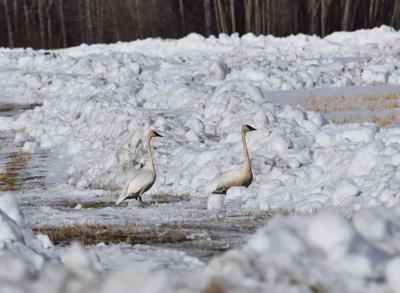News-Miner opinion: Fairbanks doesn’t need a calendar to tell us spring is here. We’ve got a better signal: the honking, bugling and chattering of tens of thousands of birds returning to Creamer’s Field.
Sandhill cranes glide in on outstretched wings. Canada geese strut with attitude. Trumpeter swans float like royalty in the flooded fields. Ducks of all kinds, from pintails to shovelers, touch down with the grace of synchronized swimmers and the volume of a marching band.
They’ve made this journey for millennia — long before Creamer’s was a dairy, long before Fairbanks was a town. These birds follow ancient migratory routes from as far away as California, Mexico and even Central America. And somehow, every year, they find their way back to this open patch of farmland in the middle of Interior Alaska.
It’s a pretty remarkable thing.
Creamer’s Field isn’t just a bird-watching hotspot. It’s a living classroom, a community sanctuary and a seasonal touchstone. Every spring, the place comes alive not just with wings and feathers but with people: families in rubber boots squishing through the thaw, volunteers setting up spotting scopes, students on field trips gasping at a pair of courting cranes dancing in the field.
It’s a joyful ritual. It’s also a fragile one.
Places like Creamer’s don’t just take care of themselves. They need stewards. They need volunteers and donors and people who show up for boardwalk repairs and bird counts. They need advocates who understand that conservation doesn’t mean locking land away — it means keeping it vibrant, educational and open to all.
Right now, the fields have been plowed in preparation for the birds. It’s part of an effort to maintain suitable foraging habitat, and it’s one of the many quiet acts of caretaking that make Creamer’s Field special. But these efforts are only possible because Fairbanksans continue to support the work of the Alaska Department of Fish and Game, Friends of Creamer’s Field, and other dedicated partners.
If you haven’t been out there yet this spring, we recommend it. Bring binoculars — or don’t. Just go stand by one of the viewing platforms, take a deep breath of that still-cool air, and listen. There’s nothing like the chorus of returning birds to remind us that, even after the longest winters, life circles back.












